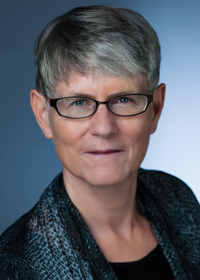Ruth Chabay 2016 Election Bio
 Ruth W. Chabay
Ruth W. Chabay
Department of Physics, North Carolina State University
Raleigh, NC 27695
rwchabay@ncsu.edu
Education
B.A., University of Chicago, 1970, Chemistry
M.S., University of Illinois, 1973, Physical Chemistry
Ph.D., University of Illinois, 1975, Physical Chemistry
Professional Experience
Member of System Software Staff, Computer-Based Education Research Laboratory (PLATO), U. of Illinois, 1975
Visiting Assistant Professor, Department of Chemistry, University of Illinois, 1975-77
Staff Fellow, Laboratory of Theoretical Biology, National Cancer Institute, National Institutes of Health, 1977-1980
Director / developer: Phlogiston Software, 1981-1984
Research Associate, Department of Psychology, Stanford University, 1984-1985
Senior Research Associate, Department of Psychology, Stanford University, 1985-1987
Visiting Scholar, Department of Education in Mathematics, Science, and Technology, School of Education, University of California, Berkeley, Spring 1987
Senior Research Scientist, Center for Design of Educational Computing, Carnegie Mellon University, 1987-1994
Adjunct Professor of Physics, Carnegie Mellon University, 1996- 2002
Senior Research Scientist, Center for Innovation in Learning, Carnegie Mellon University, 1994- 2002
Professor of Physics, North Carolina State University, 2002 - 2010
Professor Emerita of Physics, North Carolina State University, 2010 -
Weston Visiting Professor, Department of Science Teaching, Weizmann Institute of Science, Rehovot, Israel, Nov. 2012 - Jan 2013
Honors
Learning Best Microcomputer Software of the Year, 1983 (Introduction to General Chemistry, Smith, Chabay, &Keane)
EDUCOM / NCRIPTAL Software Award, 1987 - Best Tutorial (Introduction to General Chemistry, Smith, Chabay, &Keane)
Computers in Physics Educational Software Contest Winner, 1992 (Electric Field Hockey )
Julius Ashkin Teaching Award, Mellon College of Science, Carnegie Mellon University, 1999
Outstanding Professor Award, National Society of Collegiate Scholars, Carnegie Mellon University, 2001
Gertrude Cox Award for Innovative Excellence in Teaching and Learning with Technology, NC State University, 2004
Fellow of the American Physical Society, 2010
David Halliday and Robert Resnick Award for Excellence in Undergraduate Physics Teaching, American Association of Physics Teachers, 2014
Memberships
American Association of Physics TeachersAmerican Physical Society
American Educational Research Association
AAPT/APS Activities
Editorial Board, American Journal of Physics, 2003-2006
Executive Board, American Association of Physics Teachers, 2004-2007
APS Education Award Committee, 2008-2009
Editorial Board, Physical Review Special Topics: Physics Education Research, 2008-2011
Editorial Board, Resource Letters, American Journal of Physics, 2013-2015
Commentary
At every AAPT national or section meeting I attend, I am struck once more by the creativity of our members, by their openness to new ideas, and by their eagerness to share their passion for physics and physics teaching. I always come away energized and interested in trying something new. Like many academic professional organizations, AAPT faces challenges as revenues from the sale of journals decline. But we also have new opportunities to reach physics teachers at all levels who are not yet part of the AAPT community. Many of our members are actively exploring different modalities of connection, including blogs and podcasts, regular online talks and meetings, and huge MOOCs. Modalities of discourse and connection evolve over time. As an organization, while continuing to do those things we already excel at -- publishing journals, conducting conferences, sponsoring workshops -- we ought to be serious about drawing on the cutting-edge skills of our members to experiment with new and creative ways of facilitating the connections and exchange of ideas that we value so much as physicists and teachers. If elected, I look forward to helping facilitate such experiments, and to working with leadership and membership to explore new ways of connecting, exchanging ideas, and drawing new physics educators into our community.

